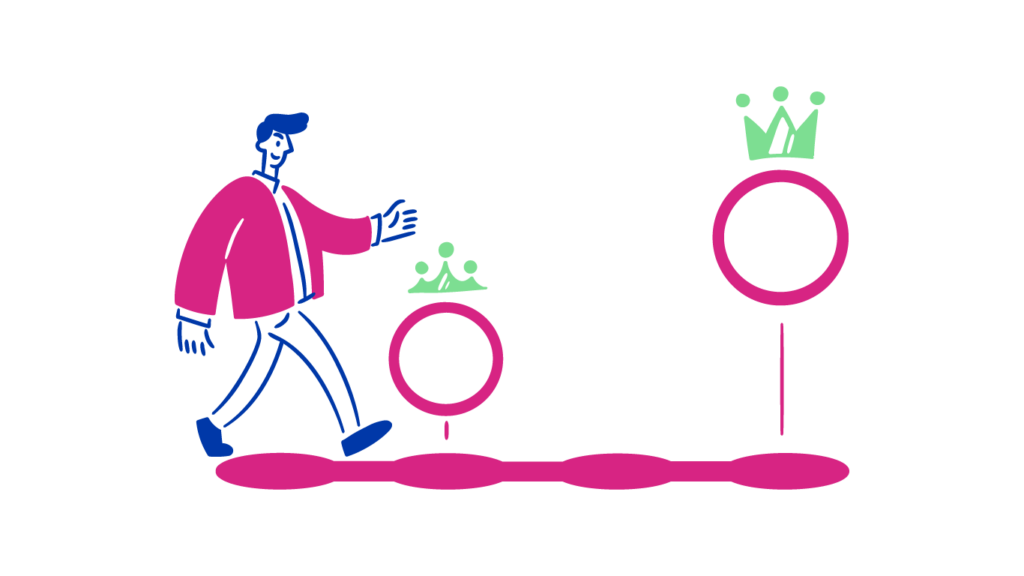The 9 Sales Pipeline Management Tips Every Manager Should Know

Sales is a job where you continuously improve and finesse your performance based on your experiences. If one lead doesn’t convert, a good rep tries to understand why and takes that knowledge into their next pitch. Currently, 44% of reps say they also look to their managers for advice on how to improve their performance.
The top sales teams also understand the importance of managing their sales pipelines to create a robust process for converting leads. However, VantagePoint found that 63% of sales reps thought their company did a bad job of managing their pipeline. Although this is a shocking statistic, it means that there is a great commercial advantage to be gained by teams that double down and concentrate on their pipeline management strategy.
We hope that, with these sales pipeline management tips, you can help your sales team reach stellar new heights.

What is sales pipeline management?
Pipeline management involves using the data generated by the pipeline to gain insights into the effectiveness of your sales processes and future performance. With this information, you can streamline the customer journey and spot potential bottlenecks with clients becoming stuck and not progressing to the next stage.
With pipeline management, a sales manager can:
- Understand where each deal is in the pipeline
- Improve the sales team’s average sales velocity (the length of time it takes them to complete the journey to making the sale)
- Predict which leads will complete with accurate sales forecasts
- Analyse your sales process to identify pinch points
- Work out whether there are enough deals in the pipeline to achieve your goals
- Predict future sales growth or shrinkage by working out whether you will hit sales targets and quotas.
Your pipeline management processes should include regular tracking and evaluation of the sales team’s deals.
Sales pipeline vs. sales funnel
Sales pipelines and sales funnels are both important for the success of your sales team. However, they are different entities with different purposes. Here is a quick guide to the differences between the two:
| Sales pipeline | Sales funnel |
| Visual representation of the stages of your sales process | Shows the decision-making process of leads |
| You use a sales pipeline to map out the stages that the customer takes from being a lead to becoming a client | The sales funnel details the number of leads who pass each stage |
| There is an internal focus with the pipeline, as it guides your sales team towards closing the deal | The funnel is more focused on the process the customer takes in their own mind as they travel along the journey from brand awareness to signing that deal |
You use the pipeline to understand where to go next with the potential customer. This includes knowing whether you need something to nudge them along. With the funnel, you can spot trends relating to when leads drop out and work out what might cause that.
The best sales pipeline management tips
Here are the best sales pipeline management tips to help maximise your team’s performance:
Monitor the right sales pipeline metrics
Sales metrics are essential to success. In this data-driven world, there are a huge number of different key metrics that a sales manager could call upon. However, knowing which are actually useful is more of a challenge. Here are some B2B sales pipeline metrics to add value to your management strategy and help create a healthy pipeline:
| Metric | Why monitor? |
| New opportunities | You need to populate your pipeline in order to bring in customers. Knowing that you are bringing in leads and understanding the channels that are bringing them in helps you monitor the success of the pipeline. |
| Qualified leads | There is no point in populating the pipeline with leads that go nowhere. Understanding how many of these prospects become qualified leads shows how effective the outreach efforts of your sales and marketing teams are. |
| Win ratio | The number of sales you achieve per prospect engaged can help track the progress of your team as a whole and that of your individual sales representatives. The win rate or conversion rate shows how efficient you are as a team. |
| Rates of conversion between pipeline stages | If you know the percentage of sales opportunities that make it through each stage, you can understand where you need to offer more in order to nudge them forwards. The stages closer to the deal will see greater conversion rates, as those that make it through are more likely to be hot leads. This means you should compare the performance of the same stage over time, rather than compare performance between the different stages. |
| Sales cycle | You should check how many stages there are to make the sale. Too many and you risk being abandoned by customers. Work out how long the sales cycle is and which stages you can cut to increase your number of closed deals. |
| Average deal size and order value | Are your deals getting larger and your order values increasing? If not, these metrics help you understand how to adjust your strategies to make the most of your deals and increase their average deal size and value. |
You can also look into sales velocity to ensure you are making the most amount of money in the shortest time. Retention rates are important, too, as they ensure that, once you have the deal, you are serving customers well.
Track progress at each stage
Taking a lead from one stage of the sales pipeline to another brings them one step closer to buying. As well as knowing who goes into the pipeline and who comes out the other side, it is essential to know what is happening at each stage.
By analysing the individual sales pipeline stages, you can understand why some leads drop out and formulate ideas on how to get these prospects to the next stage. A successful pipeline depends on the flow of traffic, so monitoring the entire sales process is a good way to keep everything moving.

Classify your prospects
One size does not fit all when it comes to prospects. If you try to sell to everyone in the same way, you will soon see a drop in your conversions. That is why it makes sense to classify prospects at the start of the process. This way, you can steer your sales team on how to approach each, giving them the best chance of converting.
Here are some factors that can help your team understand more about your leads:
- Demographics, such as age, gender, location, ethnicity, income
- Behaviours, such as purchase frequency, brand loyalty
- Psychological attributes, such as interests, beliefs, personality traits.
This helps you create a healthy sales pipeline.
Remember to follow up
Gartner found that it takes 18 sales calls to make a connection with a buyer. This shows the persistence needed to make a sale in many circumstances. It also demonstrates why you should always check in with leads as often as you can.
If you don’t receive an answer that helps move them through the sales pipeline stages, follow up with them. Make sure they don’t have a chance to forget about your business or to flirt with your competitors.
Sometimes people are busy and intended actions slip their minds, so ensure you keep in contact with them.
Keep your sales cycle short
The longer that a sales process takes, the more chance there is for the prospect to lose interest, find something else or simply change their mind about making a purchase. This is why you need to make sure you wrap up the process in the least possible time.
When hot leads turn to cold leads, the length of the sales cycle is often the reason behind it. There are a number of steps you can take to shorten the sales process. These might include decreasing the amount of time between calling and following up with a lead, or increasing the information you provide early on in the pipeline, so the prospect is fully informed and in a better position to make a decision.
Create Additional Information Sources
In addition to speeding up the sales process, having more information on the uses, benefits and specifications of the product or service you are selling will help persuade a lead to become a customer. If they have to continually ask questions of your sales rep, it suggests that your current strategy is not clear or helpful enough.
Ask your reps about the most common queries they receive relating to what you are selling and work out how to address this in the future. You could create an explainer video to share at the start of the process or develop your information pack so that it includes frequently asked questions.
Social media has caused a number of issues in society, but also brought a host of possibilities. The statistics are certainly telling:
- 65% of sales reps who use social selling fill their pipeline. Only 47% of those don’t manage to fill their sales pipeline.
- Social selling tools can increase win rate by 5% and deal size by 35%.
- 81% of Instagram users research products and services on the app.
Utilising the power of social media puts you in front of these people who are already social buying. The way we communicate is changing and your pipeline can only benefit from you embracing this.
Create effective cold calling scripts
Although cold calling can be daunting even for experienced salespeople, it can be effective. In January 2020, it was found that 69% of buyers accepted a call from new salespeople in the previous 12 months, with 75% of prospects from various industries saying they have attended an event or scheduled a meeting based on unexpected cold calls.
With this in mind, crafting cold calling scripts and cold emails that work could lead to a large number of warm leads entering your pipeline, with a real possibility of conversion into sales.
You should create scripts that introduce the rep and tackle the issue that you solve straight away. Then you can lead on to the ask and start the buyer journey through the pipeline.
Automate
There are a number of systems you can put in place to automate sections of your pipeline processes. This allows you to concentrate on perfecting the rest of your strategy and bring in more business.
There are programs to automate your sales emails, customised to target individual leads, for example. You can also use fullInfo to discover contact information about prospects at different companies.
FAQs
How do you prioritise a sales pipeline?
To prioritise your sales pipeline, you and your reps need to realistically grade the likelihood of converting each lead. Using historical data, you can get a good idea of the conversion potential of a lead. This information helps you choose which types of leads to chase and which to allow to fester.
What is sales pipeline analysis?
Sales pipeline analysis is the process of looking at the data that you generate from your pipeline and using it to inform your decision-making in the future. Using the metrics discussed above, you can finesse the sales cycle, increase sales velocity and hopefully increase your win rate too.
What are the most important pipeline metrics?
The most important pipeline metrics are those that help you shape the stages and methods you use in your pipeline. Not only should you measure how many sales you make, but you should also look into how many leads it took you to achieve those sales. Improving these metrics makes you a more efficient and successful team.
Conclusion
In order to take advantage of the potential power of your sales team, you need to ensure they have the best and most efficient pipeline to work with. Using these sales pipeline management tips, you can make sure your processes are working to help sales reps bring in the customers that you need to meet your sales quota and target.
Make sure you try out fullInfo to uncover the contact details of the leads that could bring in crucial business for your company.
Resources and Further Reading
- What You Need To Achieve Consistency In Sales Performance
- How to Dramatically Improve Your Sales Pipeline + Examples
- The Simple Guide To Sales Qualification Frameworks
- How to map and maintain your sales pipeline
- Master These Proven Sales Closing Techniques to Boost Your Results
- Build an effective pipeline (VIDEO)
- 9 B2B Sales Time Management Techniques Of Top Salespeople
- Sales Pipeline KPIs
- What is a key performance indicator?